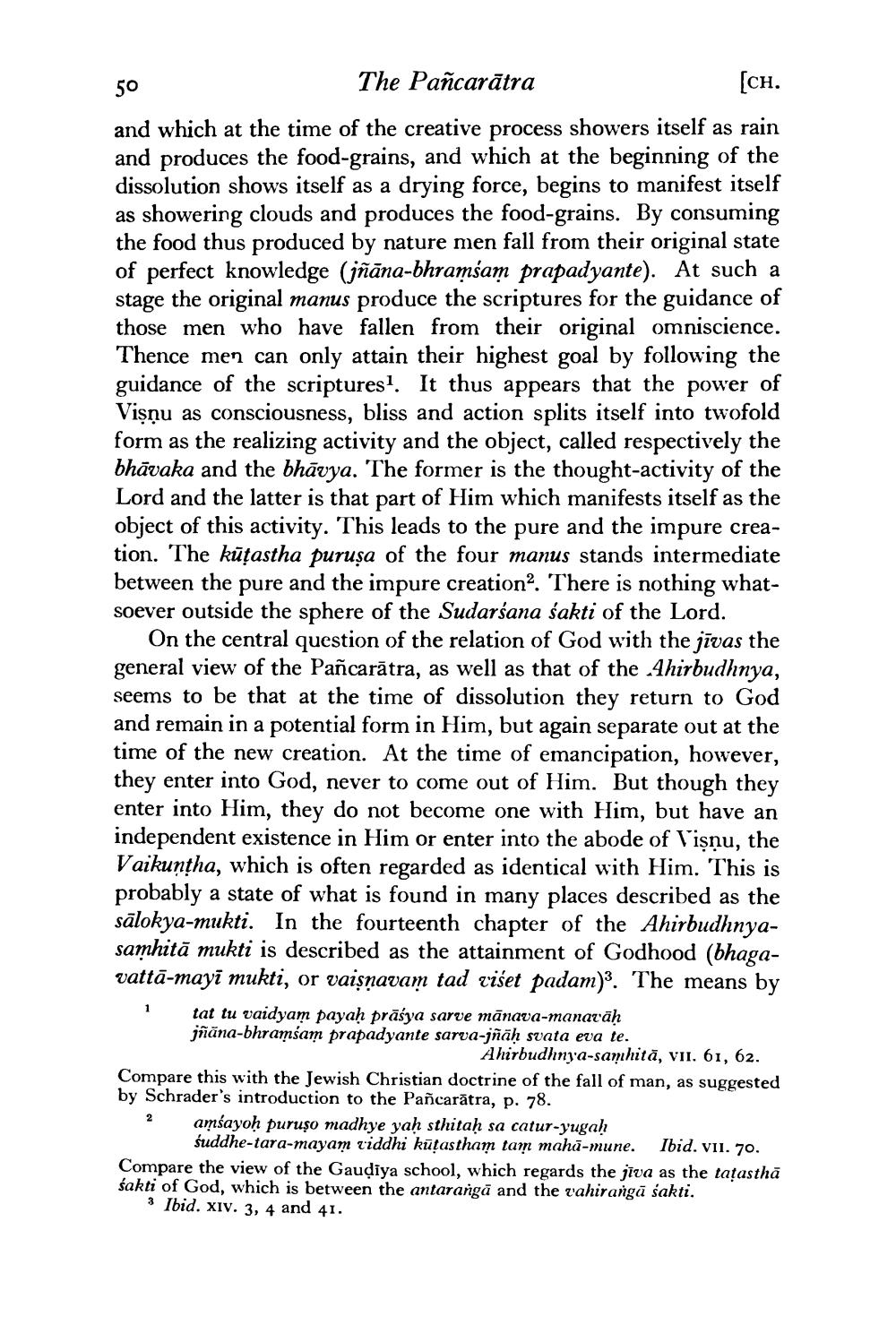________________
50
The Pañcarātra
(CH. and which at the time of the creative process showers itself as rain and produces the food-grains, and which at the beginning of the dissolution shows itself as a drying force, begins to manifest itself as showering clouds and produces the food-grains. By consuming the food thus produced by nature men fall from their original state of perfect knowledge (jñāna-bhramsam prapadyante). At such a stage the original manus produce the scriptures for the guidance of those men who have fallen from their original omniscience. Thence men can only attain their highest goal by following the guidance of the scriptures?. It thus appears that the power of Vişnu as consciousness, bliss and action splits itself into twofold form as the realizing activity and the object, called respectively the bhāvaka and the bhāvya. The former is the thought-activity of the Lord and the latter is that part of Him which manifests itself as the object of this activity. This leads to the pure and the impure creation. The kūțastha purusa of the four manus stands intermediate between the pure and the impure creation?. There is nothing whatsoever outside the sphere of the Sudarśana sakti of the Lord.
On the central question of the relation of God with the jīvas the general view of the Pañcarātra, as well as that of the thirbudhnya, seems to be that at the time of dissolution they return to God and remain in a potential form in Him, but again separate out at the time of the new creation. At the time of emancipation, however, they enter into God, never to come out of Him. But though they enter into Him, they do not become one with Him, but have an independent existence in Him or enter into the abode of Visnu, the Vaikuntha, which is often regarded as identical with Him. This is probably a state of what is found in many places described as the sālokya-mukti. In the fourteenth chapter of the Ahirbudhnyasamhitā mukti is described as the attainment of Godhood (bhagavattā-mayi mukti, or vaisnavam tad viset padam)? The means by
tat tu vaidyam payah prāsya sarve mānava-manatäh jñāna-bhramśam prapadyante sarva-jñaḥ svata eva te.
Ahirbudhnya-samhitā, vii. 61, 62. Compare this with the Jewish Christian doctrine of the fall of man, as suggested by Schrader's introduction to the Pañcarătra, p. 78.
amśayoḥ puruṣo madhye yah sthitaḥ sa catur-yugah
śuddhe-tara-mayam riddhi kūțastham tam mahā-mune. Ibid. vii. 70. Compare the view of the Gaudiya school, which regards the jīva as the tatasthā Śakti of God, which is between the antarangā and the vahirangā sakti.
3 Ibid. xiv. 3, 4 and 41.




